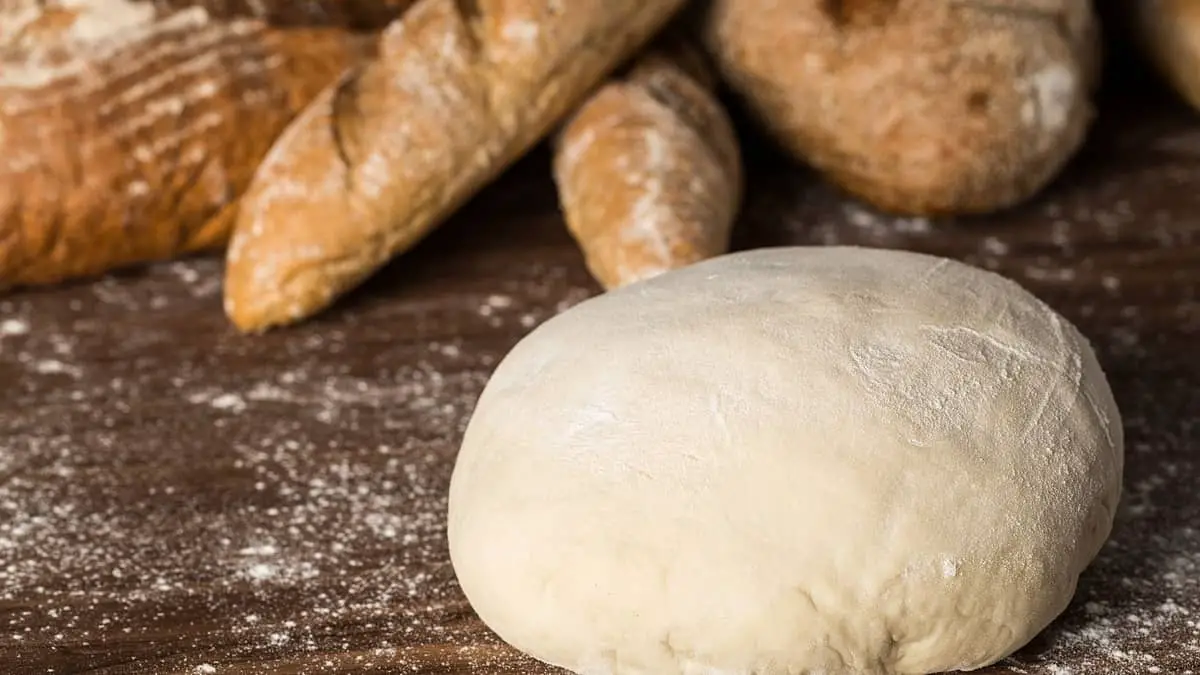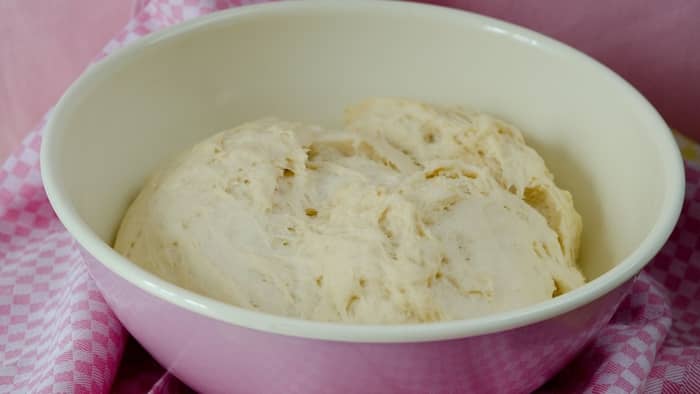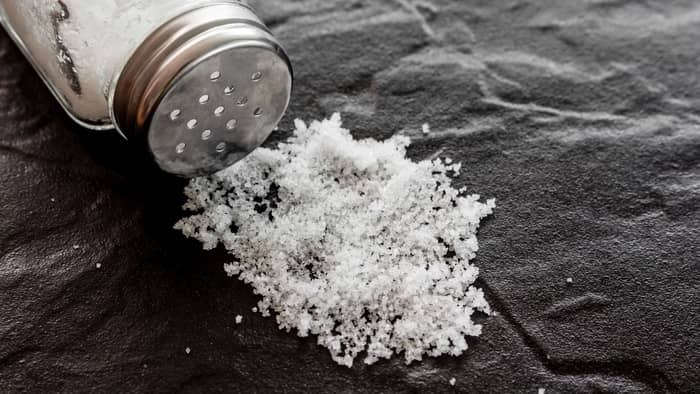Last Updated on February 13, 2023
“I forgot salt in bread, can I save it?”, is a question you may currently be asking yourself.
Don’t panic, you won’t need to start all over again, we’re about to tell you how to fix this problem. The solution’s easier than you think and it’s actually very common. So, please don’t feel bad about it.
We all know bread is one of the most complicated preparations in the kitchen, but once you get the hang of it, you’ll want to bake bread all the time. Personally, I always like to make my own homemade pizza dough from scratch, and no, I don’t buy pizza anymore unless I go out for dinner with my date or my friends.
Keep reading, we have some tips and tricks for you!
Forgot to Add Salt to Bread Dough?
Indeed, this problem is more common than you imagine, so don’t feel alone on this train, and welcome to the club of the forgetful. In like manner, bakers and kitchen lovers in general commonly forget to add ingredients.
Certainly, achieving perfect dough is an illusion that any cook wants. We all want our dough to grow and have many bubbles inside. As well as the adorable yeast smell characteristic of good bread.
Salt naturally absorbs moisture and tightens gluten. But if you’re not sure about this, you can taste some of the dough to check if it has salt. And knowing that flour is an ingredient that should not be consumed raw, you don’t need to fear, because a little piece will not have any unhealthy effect on your digestion.
And the million-dollar question’s answer is: Yes! Your bread can be saved! Let us tell you how.
Forgot Salt in Bread: Adding Salt Right After Kneading Dough
Are you kneading and realizing the dough feels sticky and flabby? It’s definitely not the desired texture and you start to wonder why. Let me tell you, we all know the feeling.
Steps to Incorporate the Forgotten Salt into Your Bread Dough
Step #1: Make a Saltwater
In a cup, mix 2 teaspoons of water with the salt.
Step #2: Re-Knead
Return the dough to the mixer or mixing bowl (low speed if you’re using an electric mixer), and pour your salty water carefully in intervals. You’ll hear it slop a little bit, but no worries.
Read more about Best Mixer For Bread Dough
Step #3: Let it Rest
Next, cover your bowl with plastic film and let the dough rest from 20 to 60 minutes before using it.
Adding Salt After its First Rise
You can now see all the air bubbles in it. In this case, re-kneading the dough will cause severe damage to it. The good thing about this is that you can still bake it.
As a recommendation, you can accompany this bread with very spicy dishes, strong-flavored cheeses or meats, or salty, flavored, and spreadable butter. You can also make some salty or sweet pizza! The point is to let your imagination run.
There is a bread called Tuscan, which doesn’t contain salt. You can also use this bread to make an Italian dish called Panzanella Salad. Take a look at it!
When to Add Salt to Yeast Dough?
Yeast is a living organism that needs to be fed by adding a little sugar to grow faster. Although it’s not mandatory to add sugar, it can still grow with the flour itself, but it would take a little longer.
If we incorporate the salt at the beginning of the kneading, we’ll notice a lower volume and greater crust, this is recommended when working with weak flour. On the other hand, if we incorporate the salt at the end of the kneading, we’ll obtain greater volume and fine crusts, do this if you’re working with strong flour.
There are two types of yeast, dry and dense yeast.
-
Dry Yeast
Dry yeast is practically hibernating, and the most important fact about it is that it’s actually quite immune to salt until it’s rehydrated. So if you’re making a straight dough, you can feel free to add salt at any time.
-
Dense Yeast (also called fresh or wet)
Certainly, salt will inhibit the fresh yeast and can kill it in a high enough concentration. Therefore, you’ll try to arrange it so that the salt is spread out in the other ingredients before it makes contact with the yeast. Meaning, you will mix all the dry ingredients first, and then, you can leave the yeast for the end.
Read more about Amazing Cinnamon Monkey Bread from Scratch Without Yeast
Why is Salt in the Dough so Important?
Salt is a super valuable ingredient, it is used to improve any dish. It affects the texture and taste of different ingredients. Salt has its right moment to be integrated, and of course, we must know what is the amount necessary for each of these ingredients or dishes.
It also helps to control its volume and improve color. It is generally used in a proportion of 2% of the weight of the flour.
What Does Salt Do In Bread?
In this particular case, salt helps control fermentation. And without it, the dough will rise faster than normal and this would result in a weak taste and structure. However, there’s no need to lose hope.
And as we mentioned before, you can still bake it and use it with too many delicious recipes like curries, cheese boards, soups, etc.
8 Salt Functions in Bread
1. Strengthens Gluten. The lack of salt produces softer and stickier doughs. Salt increases the firmness of the dough and its manageability.
2. Increases water absorption.
3. Slows down yeast activity.
4. Inhibits the action of acid bacteria. It reduces the yeast’s acidity due to its antiseptic properties.
5. Has an antioxidant effect. It produces superior oxidation when incorporated at the end of kneading.
6. Produces thinner and crispier crusts.
7. Gives taste to the bread.
8. Aid to the conservation of bread. Though, in humid climates, this can be counterproductive because it helps the bread to get leathery.
What is the Sourdough Salt Percentage?
When making sourdough bread, salt is one of the key ingredients. But you may be wondering what percentage of salt you need to add to your sourdough bread. I’ll be honest, most of the time it comes down to your flavor profiles. I like my bread very salty, but others prefer a mild flavor.
Typically, you should use anywhere between 1-2% of salt in sourdough. This is in ratio to the amount of flour you’re using. For example, if you’re using 1kg (1000g) of flour, you’ll need around 10g-20g of salt. If you’re unsure how much to add, opt for somewhere in the middle; around 15g of salt.
If you forget to add salt to your sourdough, there are a few ways to save it, depending on which stage you’re at of baking. Let’s take a closer look.
If you’re still kneading and you notice it becomes sticky, it’s likely you forgot to add the salt. You can add the salt to your dough and knead it in.
If your dough already rises and you realize there’s no salt in the dough, add a small amount of water to the top of your bread, and sprinkle with salt just before going into the oven.
If your bread is baked, simply melt some butter and add salt. Then use a pastry brush to paint your baked bread with the salty butter. Or you can make other uses of your bread, such as croutons. Or use your bread to dip into your favorite dipping options, such as oil and balsamic vinegar.
Can You Add Salt to Bread Dough After it Has Risen?
Unfortunately, you can not add salt to your dough if it’s already risen and shaped. However, you can still add a small amount of water to the top of your unbaked bread and then add some salt over the top evenly. While it won’t be incorporated into the bread, it’ll make the crust salty and delicious.
What Happens to Bread With Too Little Salt?
Bread that doesn’t have enough salt can cause problems from the beginning of your baking. Bread dough that doesn’t have enough salt will be extremely sticky and you’ll struggle to knead it, and likely found yourself using large amounts of flour on your hands and work surface.
Too little salt will also affect the taste. It’s likely to make your bread taste bland and nowhere near as flavorful as it tastes with it.
And finally, the lack of salt will mean your bread will rise too quickly and your bread is likely to be weak. You really don’t want weak and bland bread!
What Does Salt Do to Bread?
Salt in bread is actually more important than you might think. One of the most obvious reasons is that it adds a level of flavor to your bread. Not only that, but salt strengthens your bread and avoids your baked bread from having a weak structure. Salt has also been known to make the rising of bread slower than usual, which is just what you need for perfectly baked bread. And finally, salt can even give your bread a longer shelf life!
To Sum Up
I hope this post has helped you to know what to do if you forgot salt in your bread. You must take into consideration that all of these facts depend on the type of bread, personal preference, conditions, location, etc.
Don’t worry about not having added salt to the dough, remember that there’s always an option to save a fantastic recipe.
Read more about Can You Use Bleached Flour For Sourdough Starter?




